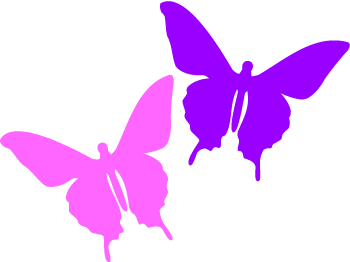A Butterfly's Three Basic Needs
- Glenn Conant
- Dec 12, 2023
- 2 min read
A Butterflies’ existence is driven by three fundamental needs;
1) The need for nourishment;
This nourishment can come from plant nectar, rotten fruit, animal dung or tears, sweat, urine and mud puddles for salt and other nutrients.
2) The need to reproduce;
From the moment that butterflies finish drying their wings after emergence from their chrysalis and start flying, reproduction is their primary concern.
Males will start patrolling in search of females, who are searching for leaves or other plants where they can deposit their eggs , and where they will be safe and where the larva can dine and grow the thousands of times that they need to before they go into their chrysalis prior to emerging as fully grown adults.
3) The need to avoid predation;
Butterflies are continually under threat of predation.
Because of this threat, many protective means have evolved that protect butterflies, to one degree or another, in several different ways.
The relatively famous and well-known Monarch butterfly has females that will generally only lay their eggs on Milk weed leaves. Milkweed is highly toxic, which makes the larva eating the Milkweed toxic to predators. This toxicity is still in existence when the adults emerge from their chrysalis, making the adults highly toxic to predators. Because of this toxicity, predators have learned to avoid the Monarchs as a food source.
Several other butterfly species have evolved to look similar to the Monarch, as a means to avoid predation as Monarchs do. (One species in particular, is the Viceroy butterfly, which is very similar to the Monarch in both coloration and markings, although there is quick way to differentiate the two. (The Viceroy will have a couple of diagonal black lines on the dorsal side hindwing, where the Monarch will not.)
It was thought that Viceroys were non-toxic to predators and used what is called Batesean Mimicry of the Monarch to avoid predation.
It is now known that the Viceroys are also toxic to predators, which means that they are practicing Mullerian Mimicry with the Monarchs.
*Batesean Mimicry is a mimicry form where a species
resembles a toxic species but is not toxic itself.
**Mullerian Mimicry is a mimicry form where two toxic species resemble each other.
Glasswing butterflies are able to protect themselves by using their clear wings as camouflage in their defense.
When a predator looks for a Glasswing, it will often look through the wings to the vegetation beyond and assume that the butterfly has disappeared.
Blue butterflies do not get their blue color from pigmentation because blue pigmentation does not exist in butterflies. Instead, they get their blue color from Structural Coloration.
Structural color is created by light being refracted by the thousands of scales on a butterfly wing. (Black and white are two more non-pigmented structural colors.)
Because the color of blue butterflies is caused by light being refracted by the wing scales, the blue color will disappear when the butterfly flies out of the sunlight. (i.e. under a tree leaf or into a darker, non -sunlit place.) Because their color reverts back to their true gray / brown color, the predator will not be able to find the blue butterfly, and will believe that the butterfly has escaped.










Comments